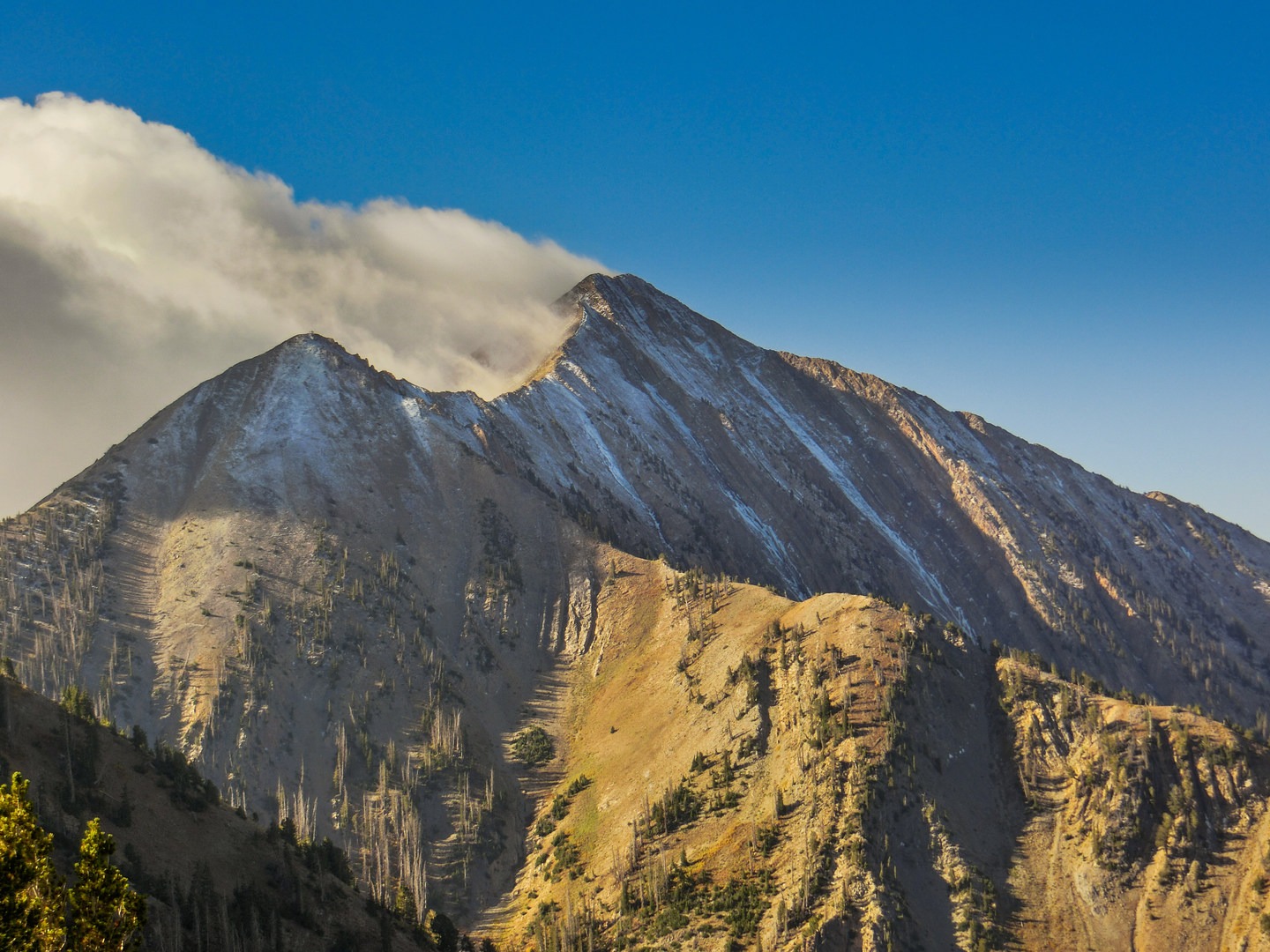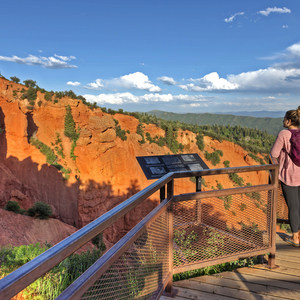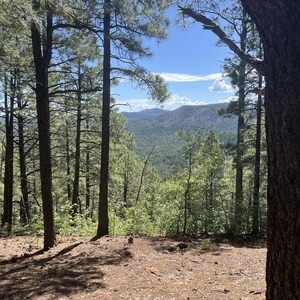Mount Nebo is an extraordinary peak for many reasons. At 11,928 feet, it is the highest mountain in Utah’s amazing Wasatch Range and, straddling the Utah/Juab County line, it is Utah County's highest point as well. (The high point of Juab County, Ibapah Peak, barely nudges it out at 12,087 feet.) Additionally, because Nebo has 5,508 feet of prominence, it also qualifies as one of only 57 ultra-prominence peaks in the lower 48 (Ibapah Peak is another). Utah is privileged to have eight such peaks within its boundaries, and the Wasatch Range contains two of them, Mount Nebo and Mount Timpanogos. Mount Nebo is nearly 200 feet higher than Timpanogos, yet it sees far less traffic than its more famous counterpart. This is most likely due to the fact that Mount Nebo is also the southernmost peak in the range and is slightly further away from the population center of the Wasatch Front. While Mount Nebo is still a popular mountain, but going on a weekday or during the shoulder season can almost guarantee you solitude on this mountain. That’s almost never the case on Mount Timpanogos.
This does not make it an easy climb though. From the I-15 corridor on the west Mount Nebo rises approximately 7,000 feet without interruption. From any direction Mount Nebo is a very steep and picturesque mountain, and any route taken involves significant elevation gain. The mountain has three distinct summits of nearly equal height, with the northernmost being the highest. There are many routes to the summit of Nebo, the easiest of which ascends the north ridge of the mountain and involves nearly 10 miles of round-trip travel and 3,500 feet of gain. Even though this route involves mostly on-trail travel, it is still quite strenuous and has very few switchbacks. The upper part of the route involves scrambling across a narrow, rocky ridge where the potential for a fall with serious consequences is a real possibility, especially if there is snow or ice present on the mountain. Winter changes the mountain from an exciting, exposed, and non-technical scramble to a full-on mountaineering expedition. Because Mount Nebo is so steep from every direction, the avalanche risk can be quite high. During the winter and spring when snow and ice are present, an ice ax and crampons will be needed for the upper part of the mountain. Additionally, access to the mountain is much more difficult in the winter because the road to the trailhead is closed.
Just to the north of Mount Nebo is another Wasatch 11,000-foot peak known as North Peak. Because its next door neighbor is a very high profile peak, it is often overlooked. However, the trail to Mount Nebo passes only a few hundred feet below North Peak’s summit, and it is well worth a little extra effort to take a detour to the summit of this peak. The view of Mount Nebo’s northern aspect from the summit of North Peak is quite extraordinary. North Peak is easily reached by leaving the trail once it has ascended to the main ridge and following the ridge south to the summit of North Peak. To regain the trail, simply descend the gentle slopes to the south toward Wolf Pass and continue on the trail from the pass.
Access to the trailhead is via the 38-mile Mount Nebo Scenic Byway road, which is regarded as one of the most beautiful drives in Utah, especially in the fall. There is a heavy concentration of aspen and Rocky Mountain maple in this area, and the fall colors never disappoint. In fact, in the fall the drive is often more popular than the mountain itself because of the spectacular colors. The colors are at their peak in late September to early October.
The conifer trees higher on the mountain have not fared so well, however. Nearly every mature conifer tree on the mountain is dead, most likely from years of drought and disease. The trail winds through many thickets of these dead trees, so great caution is necessary on windy days.
Note: There are three switchbacks just below where the trail tops out on the main ridge. Many people have chosen to cut these switchbacks, leaving an ugly eroded gash in the mountain. Please practice Leave No Trace and stay on the trail to minimize further damage.











Comments
Sign In and share them.